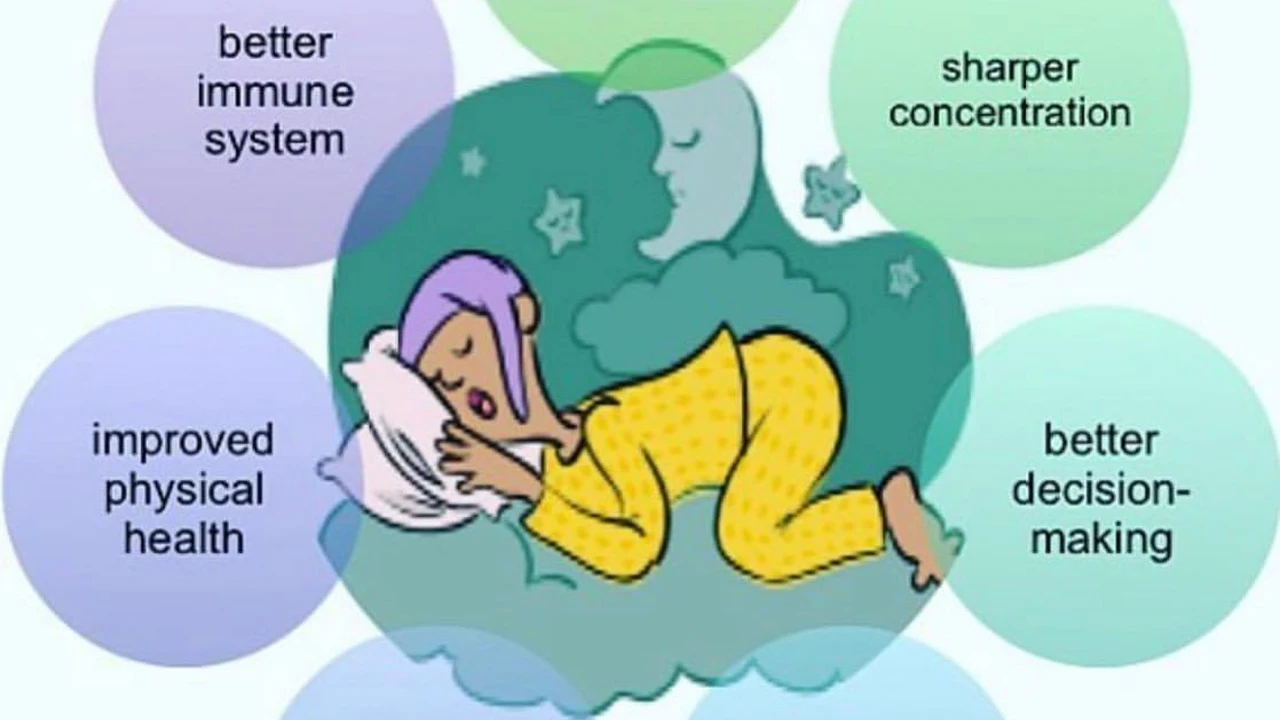How to Manage Chronic Conditions: Living Well With Illness

Oral hygiene is essential for maintaining healthy teeth and gums. Learn about the importance of brushing, flossing, and regular dental check-ups. Protect your smile and prevent dental problems.
Understanding The Basics of Oral Hygiene Importance
Alright, let's dive into why keeping your mouth clean is a big deal. It's not just about having a sparkling smile (though that's a nice bonus!). Good oral hygiene is crucial for preventing cavities, gum disease, and even bad breath. Think of your mouth as a gateway to the rest of your body. If it's not in good shape, it can affect your overall health. So, brushing, flossing, and seeing your dentist regularly are all part of the package.
Brushing Techniques for Optimal Oral Health
Okay, let's get down to the nitty-gritty of brushing. It's not just about scrubbing away at your teeth for a few seconds. You gotta do it right! Use a soft-bristled toothbrush and fluoride toothpaste. Hold the brush at a 45-degree angle to your gums and use gentle, circular motions. Make sure you're brushing all surfaces of your teeth – the front, back, and top. And don't forget to brush your tongue! That's where a lot of bacteria like to hang out. Aim for at least two minutes, twice a day. Set a timer if you need to! And remember to replace your toothbrush every three months, or sooner if the bristles are frayed.
Flossing Guide For Healthy Gums and Teeth
Flossing is where a lot of people drop the ball, but it's super important! Flossing removes plaque and food particles from between your teeth, where your toothbrush can't reach. Take about 18 inches of floss and wrap it around your middle fingers, leaving a couple of inches to work with. Gently slide the floss between your teeth, using a back-and-forth motion. Curve the floss around each tooth in a "C" shape and slide it up and down, getting just below the gumline. Use a fresh section of floss for each tooth. Floss once a day, preferably before you go to bed. If you find flossing with traditional floss difficult, try using floss picks or interdental brushes. They're easier to handle and can be just as effective.
The Role of Regular Dental Check Ups and Cleanings
Even if you're a brushing and flossing superstar, you still need to see your dentist regularly. Dentists can spot problems early on, before they become serious (and expensive!). They can also give your teeth a professional cleaning, removing plaque and tartar that you can't get rid of at home. Most dentists recommend getting a check-up and cleaning every six months. But if you have gum disease or other oral health problems, you may need to go more often. Don't skip your dental appointments! They're an investment in your overall health.
Choosing The Right Toothbrush For Your Oral Hygiene Routine
There are so many toothbrushes on the market, it can be overwhelming! Electric or manual? Soft, medium, or hard bristles? Here's the lowdown: For most people, a soft-bristled toothbrush is the best choice. Hard bristles can damage your gums and enamel. Electric toothbrushes can be more effective at removing plaque, but they're not necessary. If you go electric, look for one with a built-in timer and pressure sensor. As for the size and shape of the brush head, choose one that fits comfortably in your mouth and can reach all areas. Some popular options include the Philips Sonicare and Oral-B electric toothbrushes, known for their effectiveness and features. Manual toothbrushes like the Colgate 360 and Oral-B Pro-Health are also excellent choices, especially if you're on a budget.
Selecting The Best Toothpaste For Healthy Teeth and Gums
Toothpaste is another essential part of your oral hygiene routine. Look for toothpaste that contains fluoride, which helps strengthen enamel and prevent cavities. There are also toothpastes that target specific concerns, such as whitening, sensitivity, and tartar control. If you have sensitive teeth, choose a toothpaste like Sensodyne. If you're concerned about whitening, try Crest 3D White. For general cavity protection, Colgate Total is a good option. Be sure to read the label and choose a toothpaste that meets your individual needs. And remember, more expensive doesn't always mean better! Many affordable toothpastes are just as effective as the pricier ones. A tube of Crest or Colgate generally costs between $3 and $7, depending on the size and features.
Mouthwash Benefits For Better Breath and Oral Health
Mouthwash can be a helpful addition to your oral hygiene routine, but it's not a substitute for brushing and flossing. Mouthwash can help kill bacteria, freshen breath, and even prevent plaque and gingivitis. Look for a mouthwash that contains fluoride or other antibacterial ingredients. Some popular options include Listerine, Crest Pro-Health, and ACT. Listerine is known for its strong antiseptic properties, while Crest Pro-Health offers a gentler formula. ACT is a fluoride mouthwash that's great for preventing cavities. Swish the mouthwash around in your mouth for 30 seconds, then spit it out. Don't rinse with water afterwards, as this can wash away the beneficial ingredients. A bottle of mouthwash typically costs between $5 and $10.
Interdental Cleaning Products For Hard To Reach Areas
Sometimes, brushing and flossing aren't enough to reach all the nooks and crannies in your mouth. That's where interdental cleaning products come in handy. These products include floss picks, interdental brushes, and oral irrigators (water flossers). Floss picks are great for on-the-go flossing, while interdental brushes are ideal for cleaning between teeth with wider gaps. Oral irrigators use a stream of water to remove plaque and food particles from between your teeth and below the gumline. Waterpik is a popular brand of oral irrigator, with models ranging from $50 to $100. Interdental brushes, like those from GUM, typically cost around $5 to $10 for a pack. These tools can be especially helpful for people with braces, bridges, or implants.
Dietary Considerations For Maintaining Oral Hygiene
What you eat can have a big impact on your oral health. Sugary and acidic foods can erode enamel and contribute to cavities. Try to limit your intake of sugary drinks, candy, and processed foods. Instead, focus on eating a healthy, balanced diet rich in fruits, vegetables, and whole grains. Dairy products, such as milk and cheese, are also good for your teeth, as they contain calcium and phosphorus, which help strengthen enamel. Chewing sugar-free gum after meals can also help stimulate saliva flow, which neutralizes acids and washes away food particles. Remember, a healthy diet is not just good for your body; it's good for your teeth too!
Preventing Gum Disease and Maintaining Healthy Gums
Gum disease, also known as periodontal disease, is a common infection of the gums that can damage the soft tissue and bone that support your teeth. In its early stages, gum disease is called gingivitis and can cause red, swollen, and bleeding gums. If left untreated, gingivitis can progress to periodontitis, which can lead to tooth loss. The best way to prevent gum disease is to practice good oral hygiene, including brushing, flossing, and regular dental check-ups. If you notice any signs of gum disease, such as bleeding gums or persistent bad breath, see your dentist right away. Early treatment can help prevent serious complications.
The Connection Between Oral Health and Overall Wellness
Believe it or not, your oral health is closely linked to your overall health. Studies have shown that people with gum disease are at a higher risk of developing other health problems, such as heart disease, stroke, diabetes, and respiratory infections. This is because the bacteria that cause gum disease can enter the bloodstream and travel to other parts of the body, causing inflammation and damage. By taking care of your oral health, you're not just protecting your teeth and gums; you're protecting your entire body. So, make oral hygiene a priority and invest in your overall well-being.
Products Recommendations For Complete Oral Hygiene Routine
Let's talk about some specific products that can help you achieve a complete oral hygiene routine. For electric toothbrushes, the Philips Sonicare DiamondClean Smart ($270) is a top-of-the-line option with multiple brushing modes and a pressure sensor. The Oral-B iO Series 9 ($300) is another excellent choice, featuring AI technology that guides you to brush all areas of your mouth effectively. For manual toothbrushes, the Colgate 360 ($6) and Oral-B Pro-Health ($5) are affordable and effective options. For toothpaste, Crest 3D White ($7) is great for whitening, while Sensodyne ($8) is ideal for sensitive teeth. For mouthwash, Listerine ($7) is a classic antiseptic option, while Crest Pro-Health ($6) offers a gentler formula. And for interdental cleaning, the Waterpik Aquarius Water Flosser ($80) is a popular choice, and GUM Soft-Picks ($7) are convenient for on-the-go flossing. Remember to choose products that meet your individual needs and preferences, and don't be afraid to experiment until you find what works best for you.
The Long Term Benefits Of Prioritizing Oral Hygiene
Investing in good oral hygiene habits now will pay off in the long run. You'll save money on costly dental treatments, prevent pain and discomfort, and enjoy a healthier, more confident smile. Plus, you'll be protecting your overall health and reducing your risk of developing serious health problems. So, make oral hygiene a priority and start taking care of your teeth and gums today. Your body will thank you for it!
:max_bytes(150000):strip_icc()/277019-baked-pork-chops-with-cream-of-mushroom-soup-DDMFS-beauty-4x3-BG-7505-5762b731cf30447d9cbbbbbf387beafa.jpg)






